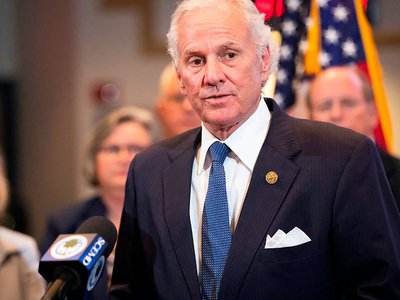Alaska is the answer to a number of critical national security questions in our nation’s history. For example, during World War II, the 1,800-mile Alaska highway was built in just eight months to pry open military access to the North Pacific theater. In 1973, the OPEC oil embargo drove up the price of gasoline more than 40 percent; Congress quickly authorized the Trans-Alaska Pipeline and Alaska went on to start producing 20 percent of the nation’s oil.
Energy security equals national security and now Russia’s invasion of Ukraine threatens the world’s energy supply. Europe draws 40 percent of its natural gas from Russia, perhaps why Russia chose to invade in the dead of winter.
And although the U.S. recently became the world’s largest exporter of liquefied natural gas (LNG), serving allies across both the Atlantic and Pacific, our supply is still stretched thin. Today we have limited ability to meet additional European energy needs if the Russian spigot closes. A recent Wall Street Journal report notes “Given that U.S. LNG cargoes have Asian customers, where supply is also tight, there isn’t infinite wiggle room.”
Enter Alaska. Alaska is sitting on one of the world’s largest reservoirs of natural gas but lacks the infrastructure to deliver it to U.S. allies around the world. Every day on the North Slope, enough natural gas is produced to meet the needs of California, Oregon and Washington combined, but it is reinjected into the ground because there is no way to get it to market. Delivering Alaska’s natural gas to Japan, Korea, and other allied Asian markets along the Pacific Rim frees U.S. Gulf Coast LNG providers to focus capacity on our European allies.
Fortunately, there is a lot of recent progress on the Alaska LNG Project to report. A just-completed analysis by Wood Mackenzie concludes that, for the first time, Alaska LNG can deliver LNG to Asia at more competitive prices than LNG from the Gulf Coast. Wood Mackenzie studied improvements made to Alaska LNG over the past five years and determined that Alaska LNG has been able to reduce our cost of supply to Asia by 43 percent.
Wood Mackenzie forecasts that global LNG demand will continue to accelerate through 2050, strengthening the need for new projects like Alaska LNG. Alaska LNG is fully permitted and the state corporation leading development of the project is working with private sector parties to lead and complete the development of its main infrastructure components.
The recent federal infrastructure legislation, passed with bipartisan congressional support and signed by President Biden, includes more than $26 billion in federal loan guarantees for Alaska LNG. Utilizing these loan guarantees will further improve its cost-effectiveness. I applaud our lawmakers for deploying our natural resources for strategic, economic, and even climate reasons.
Natural gas burns cleanly, making it a preferred energy source, particularly in rapidly growing Asian markets confronting air pollution created by other energy sources. Here at home, we see the same air quality problems in parts of Alaska winter after winter. Because of these problems, the American Lung Association identified Fairbanks, Alaska as “The Most Polluted City in the Nation.”
Because energy projects compete on both economic and environmental measures, Alaska LNG commissioned a study to understand the project’s climate impacts. Third-party experts determined that replacing a portion of Asia’s coal use with equivalent energy from Alaska LNG will eliminate 77 million metric tons of annual carbon dioxide equivalent emissions, a 50 percent reduction.
According to the EPA’s Greenhouse Gas Equivalencies Calculator, 77 million metric tons of carbon emissions is the annual equivalent of taking 19 coal-fired power plants offline or removing 16.8 million passenger cars from the road for a year.
Alaska has some of the most stringent environmental regulations in the world, assuring that natural gas will be produced with minimal impacts on wildlife, air, and water versus other parts of the world with looser standards and limited enforcement. Each LNG tanker round trip from Alaska will be about a month shorter than from Gulf Coast ports, further contributing to Alaska LNG’s emissions and economic savings.
Natural gas is a key ingredient for hydrogen production, and the increasing global demand for zero-carbon hydrogen is also fueling progress for Alaska LNG. U.S. policymakers and the private sector are investing tens of billions of dollars over the next few years to drive the creation of new U.S. hydrogen production hubs and carbon capture hubs. Alaska is well situated to compete due to our vast supply of conventional, non-fracked natural gas, unique geologic formations well suited for carbon capture, and established in-state energy industry and environmental oversight.
Vladimir Putin’s unprovoked aggression in Europe will have broad energy and security repercussions well beyond Ukraine’s borders. With Alaska LNG under development, Alaska is ready to keep the U.S. well-positioned as a reliable provider of strategic clean energy for our allies for the next hundred years.
Elected in 2017, Michael J. Dunleavy is the 12thgovernor of Alaska. He previously served as a teacher, school board member, and state senator in Alaska.






